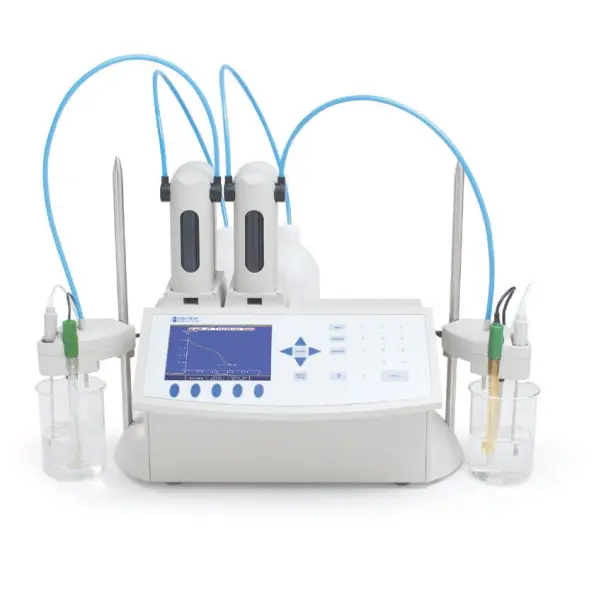
Environmental Monitoring of Nitrates and Other Water Quality Parameters: pH,
Environmental Monitoring of Nitrates and Other Water Quality Parameters: pH,...

Honey remains one of the most popular sweeteners used in baking, beverages and sauces. Honey’s naturally low water content and high sugar content contribute to its indefinite shelf life. In fact, archaeological evidence has shown that honey was used as an embalming fluid in ancient Egypt. Now, it is mainly used as a food additive, which makes accurate labelling and supervision of its composition very important.
Most honey is made from nectar, which flowering plants produce to aid in pollination. When bees visit flowers to collect nectar they extract it and store it in a digestive organ called a crop. When the bees carry nectar back to the hive, it is transferred into a honeycomb for storage. As water evaporates from the honeycomb, bees secrete a fluid to seal the honeycomb. This fluid hardens into beeswax which further preserves the honey. The stockpiled honey sustains the bees during colder months, when foraging is difficult. Honey’s high carbohydrate content makes it a great food source for bees. In Australia, there are hundreds of honey varietals, each with unique flavours, colours, and odours. The large variety in characteristics depends on the source of the flower nectar.Most honey of Australia originates from Eucalyptus trees.Blue gum, Karri, Leatherwood, Lucerne, Yellow box, Stringy bark, Ti-tree, White clover are just a few of the most popular Australian honey types.
Alternatively, “honeydew” honey is made from a different source. Aphids, a common plant pest, rely on plant sap for nutrition. When aphids ingest plant sap, it displaces already digested sap back onto the plant. During times of food shortage, bees will collect the digested sap and process it just as they would floral honey. Climate, weather, and floral nectar availability influence the amount of honeydew present in the final product. Honeydew honey typically has less sugar and is darker in colour than floral honey.
The Codex Alimentarius, commonly referred to as the “Food Code”, was developed in 1963 by the World Health Organization and the Food and Agricultural Organization of the United Nations. This code outlines quality standards and practices for the production and international trade of food, including honey. The codex standard for honey, adopted in 1987, states that floral honey contains no less than 60g of reduced sugars per 100g of honey, while honeydew honey contains no less than 45g of reduced sugars per 100g of honey. These guidelines ensure a consistent quality product and accurate labeling.
Application:

A honey manufacturer contacted Hanna Instruments interested in testing the reducing sugar content of their processed honey. They wanted to verify reducing sugar content in an effort to comply with Codex guidelines. The manufacturer already had a testing lab established and wanted an accurate method for determining reducing sugars. Hanna Instruments suggested the HI902 Automatic Potentiometric Titrator. The reducing sugars titration is an oxidation-reduction potential (ORP) titration, which relies on the reaction between reducing sugars in the sample with Fehling’s reagent. This reaction forms iodine, which is then titrated with sodium thiosulfate and monitored by an ORP electrode.
This reaction, however, is not linear and requires both a blank titration for the reagents and a “calibration” titration with a known standard. Although the method of analysis is more complicated than a typical titration, the customer felt comfortable after receiving installation and training. The customer appreciated the ease of use with the HI902 and the ability to review up to 100 titration reports directly on the unit. By monitoring the reducing sugar content of their honey, the customer was able to create a quality, consistent product in line with Codex standards.
Environmental Monitoring of Nitrates and Other Water Quality Parameters: pH,...
Salt Concentration In A Brine Solution For Curing Salmon Traditionally,...

To empower customers to achieve quality by supplying intuitive, accurate, and reliable analytical instruments with exceptional customer service and value.
We take pride in every product we build. From an original idea to a completed product ready for testing. We oversee every aspect of the manufacturing process. It is this level of attention to detail that sets us apart.
To empower customers to achieve quality by supplying intuitive, accurate, and reliable analytical instruments with exceptional customer service and value.
We take pride in every product we build. From an original idea, to a completed product ready for testing. We oversee every aspect of the manufacturing process. It is this level of attention to detail that sets us apart.
To empower customers to achieve quality by supplying intuitive, accurate, and reliable analytical instruments with exceptional customer service and value.
We take pride in every product we build. From an original idea, to a completed product ready for testing. We oversee every aspect of the manufacturing process. It is this level of attention to detail that sets us apart.

